-

 李述汤简 历:李述汤,材料学家,中国科学院院士,发展中国家科学院院士。苏州大学功能纳米与软物质研究院院长、纳米科学技术学院院长。主要研究领域为有机光电子材料及显示器件,曾获德国洪堡基金会研究成就奖、香港裘槎基金会高级研究成就奖,国家自然科学二等奖(三次)。2008年获何梁何利基金科技进步奖。发表学术论文1,100余篇,他引次数超过60,000次,H-index为123。现任ACS Nano副主编。
李述汤简 历:李述汤,材料学家,中国科学院院士,发展中国家科学院院士。苏州大学功能纳米与软物质研究院院长、纳米科学技术学院院长。主要研究领域为有机光电子材料及显示器件,曾获德国洪堡基金会研究成就奖、香港裘槎基金会高级研究成就奖,国家自然科学二等奖(三次)。2008年获何梁何利基金科技进步奖。发表学术论文1,100余篇,他引次数超过60,000次,H-index为123。现任ACS Nano副主编。
题 目:OLED的机遇与挑战
摘 要:未来是一个显示和照明无处不在的世界。有机发光二极管(OLED)技术具有固态发光、响应快速、高效节能、材质轻薄、色彩丰富、可透明化、可柔性弯折等特性,在显示和照明领域具有独特的优势,在移动通讯、计算机及平板电视等信息显示领域已进入商业化阶段,同时在柔性显示、可穿戴显示、室内照明及医疗照明等领域的应用开发也已进入冲刺阶段。OLED技术虽然近年来取得快速进步,仍有许多重大的科学问题亟待解决,而且这些问题决定和制约着OLED显示和照明产品的实际应用。本报告将集中探讨OLED在基础研究和产业应用的最新进展以及面临的主要挑战,包括:1)高效高稳定有机发光材料;2)高性能器件结构与制备工艺;3)制造装备与系统集成。特别是,针对我国OLED产业安全问题,本报告将重点分析产业链短缺环节,以及如何重点突破OLED制造装备的“卡脖子”问题。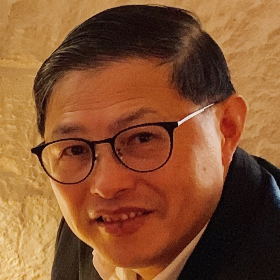
 Professor Gu简 历:Professor Gu, executive chancellor and distinguished processor of University of Shanghai for Science and Technology, distinguished professor and associate deputy vice-chancellor at RMIT University and a laureate fellow of the Australian Research Council. He is an author of four standard reference books and has over 500 publications in nano/biophotonics. He is an elected Fellow of the Australian Academy of Science and the Australian Academy of Technological Sciences and Engineering as well as Foreign Fellow of the Chinese Academy of Engineering. He is also an elected fellow of the AIP, the OSA, the SPIE, the InstP, and the IEEE. He was President of the International Society of Optics within Life Sciences, Vice President of the Board of the International Commission for Optics (ICO) (Chair of the ICO Prize Committee) and a Director of the Board of the Optical Society of America (Chair of the International Council). He was awarded the Einstein Professorship, the W. H. (Beattie) Steel Medal, the Ian Wark Medal, the Boas Medal and the Victoria Prize for Science and Innovation. Professor Gu is a winner of the 2019 Dennis Gabor Award of SPIE.
Professor Gu简 历:Professor Gu, executive chancellor and distinguished processor of University of Shanghai for Science and Technology, distinguished professor and associate deputy vice-chancellor at RMIT University and a laureate fellow of the Australian Research Council. He is an author of four standard reference books and has over 500 publications in nano/biophotonics. He is an elected Fellow of the Australian Academy of Science and the Australian Academy of Technological Sciences and Engineering as well as Foreign Fellow of the Chinese Academy of Engineering. He is also an elected fellow of the AIP, the OSA, the SPIE, the InstP, and the IEEE. He was President of the International Society of Optics within Life Sciences, Vice President of the Board of the International Commission for Optics (ICO) (Chair of the ICO Prize Committee) and a Director of the Board of the Optical Society of America (Chair of the International Council). He was awarded the Einstein Professorship, the W. H. (Beattie) Steel Medal, the Ian Wark Medal, the Boas Medal and the Victoria Prize for Science and Innovation. Professor Gu is a winner of the 2019 Dennis Gabor Award of SPIE.
题 目:Nanoscale laser patterning in nanomaterials
摘 要:Laser patterning is an important method for modifying materials from 3D model data. The utilisation of an ultrashort laser beam is one of the effective ways to achieve this process. In the case of laser patterning and writing, the fundamental restriction is the limit of the feature size, which is determined by the so-called Abbe’s law discovered by a German physicist, Ernst Abbe, in 1873. Abbe’s barrier means that the size of the features generated by a laser beam is approximately 300 nm, for example, in a visible beam. In this presentation, I will show how Abbe’s limit can be broken in the recent development of optical beam nanolithography. Therefore, the feature size by a laser beam focused by a high numerical lens can be remarkably reduced to 9 nm in a polymerisable material. This breakthrough in laser writing, when it is combined with nanomaterials, will not only provide a disruptive technology for generating an optical disk with a capacity up to Petabytes, which will allow for the accelerating development of green optical data centres, but also facilitate a new horizon of ultrahigh energy density super-capacitors, nanoscale organic optoelectronic devices, nanoscale chemical reaction chips, artificial neural networks, and biomimetic systems.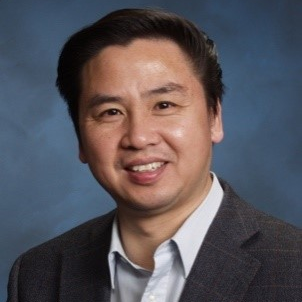
 Liming Dai简 历:Liming Dai joined Case Western Reserve University (CWRU) in fall 2009 as the Kent Hale Smith Professor in the Department of Macromolecular Science and Engineering. He is also director of the Center of Advanced Science and Engineering for Carbon (CASE4Carbon) at CWRU and the BUCT-CWRU International Joint Laboratory. Dr. Dai received a BSc degree from Zhejiang University in 1983, and a PhD from the Australian National University in 1991. He accepted a postdoctoral fellowship from the Cavendish Laboratory at the University of Cambridge, and two years later became a visiting fellow in Department of Materials Science and Engineering at the University of Illinois at Urbana-Champaign. He spent 10 years with the Commonwealth Scientific and Industrial Research Organization (CSIRO) in Melbourne, Australia. Before joining the CWRU, he was an associate professor of polymer engineering at the University of Akron and the Wright Brothers Institute Endowed Chair Professor of Nanomaterials at the University of Dayton.
Liming Dai简 历:Liming Dai joined Case Western Reserve University (CWRU) in fall 2009 as the Kent Hale Smith Professor in the Department of Macromolecular Science and Engineering. He is also director of the Center of Advanced Science and Engineering for Carbon (CASE4Carbon) at CWRU and the BUCT-CWRU International Joint Laboratory. Dr. Dai received a BSc degree from Zhejiang University in 1983, and a PhD from the Australian National University in 1991. He accepted a postdoctoral fellowship from the Cavendish Laboratory at the University of Cambridge, and two years later became a visiting fellow in Department of Materials Science and Engineering at the University of Illinois at Urbana-Champaign. He spent 10 years with the Commonwealth Scientific and Industrial Research Organization (CSIRO) in Melbourne, Australia. Before joining the CWRU, he was an associate professor of polymer engineering at the University of Akron and the Wright Brothers Institute Endowed Chair Professor of Nanomaterials at the University of Dayton.
Dr. Dai’s expertise covers the synthesis, functionalization, and device fabrication of conjugated polymers and carbon nanomaterials for energy-related and biomedical applications. He has published more than 500 scientific papers, and held about 30 issued/applied patents. He has an h-index of 135 and citations over 68,000 (Google Scholar). He has also published a research monograph on intelligent macromolecules and 6 edited/co-edited books on carbon nanomaterials for advanced energy systems and biomedical applications. Dr. Dai serves as an Associate Editor of Nano Energy (Elsevier) and editorial board member of many international journals. He is a Highly Cited Researcher (Chemistry, Materials) and has received various awards, including the International Union of Materials Research Societies’ 2019 IUMRS-Somiya Award, 2018 NASA-Langley Henry J.E. Reid Award, 2016 CWRU Faculty Distinguished Research Award, 2013 Zhejiang Science and Technology Award, 2013 Zhejiang Biomedical Technology Award, 2006 Ohio Outstanding Engineer and Scientist Award, and 2006 George Noland Research Award from Sigma Xi. He is a Fellow of the Royal Society of Chemistry and Fellow of the American Institute for Medical and Biological Engineering (AIMBE).
题 目:Ten Years of Metal-free Carbon Electrocatalysts
摘 要:Catalysis is a major field in science and engineering. Among the numerous catalytic reactions, the oxygen reduction reaction (ORR), oxygen evolution reaction (OER), and hydrogen evolution reaction (HER) are critical for clean and renewable energy technologies. While these reactions show great promise toward solving global energy and environmental challenges, they normally require noble-metal-based catalysts (e.g., Pt, Pd, RuO2, IrO2). The high cost of precious metal-based catalysts and their limited reserve have precluded these renewable energy technologies from large-scale applications. Therefore, it is highly desirable to develop alternative catalysts with superior electrocatalytic performance, compared to noble-metal-based catalysts, and are also readily available and cost effective with additional potential attributes beyond those of current-generation metal catalysts.
In 2009, we demonstrated that nitrogen-doped carbon nanotubes (N-CNTs) could be used as heteroatom-doped metal-free carbon electrocatalysts to replace Pt for the ORR in fuel cells. The improved catalytic performance was attributed to the doping-induced charge transfer from carbon atoms adjacent to the nitrogen atoms to change the chemisorption mode of O2 and to readily attract electrons from the anode for facilitating the ORR. Subsequently, it was also found that various graphitic carbon materials, doped with heteroatoms of different electronegativities from that of carbon atom, physically adsorbed with certain polyelectrolytes, and even without any apparent dopant or physically adsorbed polyelectrolyte, could exhibit good ORR performance. More recent studies have further demonstrated that certain heteroatom-doped carbon nanomaterials could act as metal-free bifunctional electrocatalysts for ORR/OER in metal-air batteries for energy storage, and even ORR/OER/HER trifunctional electrocatalysts for self-powered water-splitting to generate hydrogen fuel and oxygen gas from water, leading to a large variety of low-cost, highly-efficient and multifunctional electrocatalysts for clean and renewable energy technologies.
Great progress has been made since the first metal-free carbon electrocatalyst was discovered over 10 years ago. In this talk, I will summarize some of our work on the development of metal-free carbon electrocatalysts for various energy-related reactions, along with an overview on the recent advances and perspectives in this exciting field.
 程一兵简 历:程一兵,武汉理工大学材料复合新技术国家重点实验室“千人计划”教授,澳大利亚Monash大学材料科学与工程系终身荣誉教授、澳大利亚工程院院士。1991年10月至2018年3月在澳大利亚Monash大学工作,主要从事无机材料研究,其间担任澳大利亚维多利亚州有机太阳能电池研究中心首席研究员、澳大利亚国家先进太阳能电池研究中心首席研究员、Monash大学分中心主任、及澳大利亚研究基金委激子科学研究中心首席研究员。目前主要研究高性能薄膜钙钛矿电池。已培养博士后、博士生七十多名,发表研究论文五百多篇,专利二十余项。2018年入选跨学科领域全球“高被引科学家”名单。
程一兵简 历:程一兵,武汉理工大学材料复合新技术国家重点实验室“千人计划”教授,澳大利亚Monash大学材料科学与工程系终身荣誉教授、澳大利亚工程院院士。1991年10月至2018年3月在澳大利亚Monash大学工作,主要从事无机材料研究,其间担任澳大利亚维多利亚州有机太阳能电池研究中心首席研究员、澳大利亚国家先进太阳能电池研究中心首席研究员、Monash大学分中心主任、及澳大利亚研究基金委激子科学研究中心首席研究员。目前主要研究高性能薄膜钙钛矿电池。已培养博士后、博士生七十多名,发表研究论文五百多篇,专利二十余项。2018年入选跨学科领域全球“高被引科学家”名单。
题 目:柔性钙钛矿太阳能电池的产业化前景与面临的技术挑战
摘 要:钙钛矿太阳能电池是一种新型的薄膜光伏技术,在短短几年时间里,其光电转化效率从最初的3%,最近已提升到>23%,已超过多晶硅和其它薄膜太阳能电池,略低于单晶硅电池。钙钛矿太阳能电池可以用溶液法或低温真空法制备,因此,很适合在塑料基板上制备成柔性电池。钙钛矿太阳能电池的另一个特点,是弱光下(如室内光)发电效果比硅电池好,而且制备成本低。这些特点适合为智能可穿戴电子和物联网等下一代智能光电产品提供可移动的便携式能源。钙钛矿光伏技术目前所面临的主要挑战,是电池所用的材料稳定性差,大面积制备的功能薄膜含有较多的缺陷,以及钙钛矿材料中含有重金属铅。如何克服这些障碍,是钙钛矿光伏电池能否实现产业化的关键。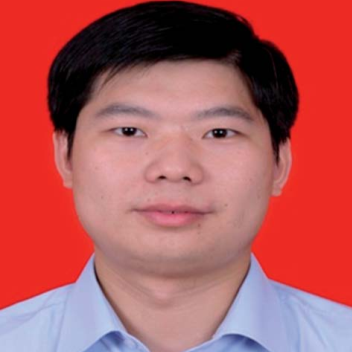
 LIU Zhitian简 历:LIU Zhitian, full professor of materials science and engineering at Wuhan Institute of Technology. He specializes in the design, synthesis, and characterization of novel conjugated polymers and their application in novel optoelectronic devices. His current research activities focus on optoelectronic materials and devices, including light-emitting diodes and solar cells. He received his Ph.D. degree in polymer materials from South China University of Technology under the guidance of Prof. Yong Cao and then worked as a visiting scholar in materials science and engineering at the University of California, Los Angeles with Prof. Qibing Pei.
LIU Zhitian简 历:LIU Zhitian, full professor of materials science and engineering at Wuhan Institute of Technology. He specializes in the design, synthesis, and characterization of novel conjugated polymers and their application in novel optoelectronic devices. His current research activities focus on optoelectronic materials and devices, including light-emitting diodes and solar cells. He received his Ph.D. degree in polymer materials from South China University of Technology under the guidance of Prof. Yong Cao and then worked as a visiting scholar in materials science and engineering at the University of California, Los Angeles with Prof. Qibing Pei.
题 目:Fine-Tuning the Quasi-3D Geometry: Enabling Efficient Nonfullerene Organic Solar Cells Based on Perylene Diimides
摘 要:The geometries of acceptors based on perylene diimides(PDIs) are important for improving the phase separation and chargetransport in organic solar cells. To fine-tune the geometry, biphenyl, spiro-bifluorene, and benzene were used as the core moiety to constructquasi-three-dimensional nonfullerene acceptors based on PDI buildingblocks. The molecular geometries, energy levels, optical properties, photovoltaic properties, and exciton kinetics were systematically studied.The structure-performance relationship was discussed as well. Owing to the finest phase separation, the highest charge mobility and smallestnongeminate recombination, the power conversion efficiency ofnonfullerene solar cells using PDI derivatives with biphenyl core (BP-PDI4) as acceptor reached 7.3% when high-performance wide band gapdonor material (PBDB-T).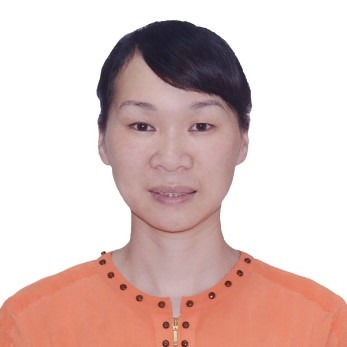
 Yingping Zou简 历:Dr. Yingping Zou, professor of Central South University. She got her BSc in chemistry, MSc in polymer engineering in Xiangtan University, physical chemistry Doctor's degree (Ph.D.) at Institute of Chemisty, Chinese Academy of Sciences. In 2008, she is an assistant professor in Central South University, she was promoted to associate professor in 2010, in Feb, 2014, she got an accelerated promotion to a full professor. During 2008-2010, she is a postdoc in Laval University with Prof.Mario Leclerc. During 2012-2014, she is a visiting professor in Stanford University with Prof. Hongjie Dai. Currently her researches focus on the organic small molecules/polymers for high performance optoelectronic devices. She has published more than 150 papers with more than 5500 citations including Nature Communications, J.Am.Chem.Soc, Adv Mater, etc. and H index is 38 with more than 10 patents. More than 30 invited talks have been delivered in some conferences.
Yingping Zou简 历:Dr. Yingping Zou, professor of Central South University. She got her BSc in chemistry, MSc in polymer engineering in Xiangtan University, physical chemistry Doctor's degree (Ph.D.) at Institute of Chemisty, Chinese Academy of Sciences. In 2008, she is an assistant professor in Central South University, she was promoted to associate professor in 2010, in Feb, 2014, she got an accelerated promotion to a full professor. During 2008-2010, she is a postdoc in Laval University with Prof.Mario Leclerc. During 2012-2014, she is a visiting professor in Stanford University with Prof. Hongjie Dai. Currently her researches focus on the organic small molecules/polymers for high performance optoelectronic devices. She has published more than 150 papers with more than 5500 citations including Nature Communications, J.Am.Chem.Soc, Adv Mater, etc. and H index is 38 with more than 10 patents. More than 30 invited talks have been delivered in some conferences.
题 目:New molecular design towards high performance organic photovoltaics
摘 要:Recently, non-fullerene n-type organic semiconductors (n-OS) have attracted significant attention as acceptors in organic photovoltaics (OPVs) due to their great potential to realize high power conversion efficiencies (PCEs). In this regard, a rational design of central fused ring unit of the n-OS molecules is crucial to maximize the state-of-the-art PCEs. Here, we report a new class of n-OS acceptor, Y series, that employ a ladder-type electron-deficient-core-based central fused ring to fine tune its absorption and energy levels. Among these new acceptors, the Y6-based OPVs exhibit a high efficiency of 15.7 % (both in conventional or inverted structures), and a certified efficiency of 14.9 % by an inverted structure. The electron-deficient-core-based fused ring reported in this work opens a new way in the molecular design of high performance n-OS acceptors for OPVs.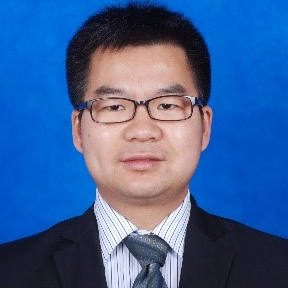
 唐 江简 历:唐 江,男,华中科技大学武汉光电国家研究中心教授,基金委杰出青年基金和科技部万人计划科技创新领军人才获得者。近5年来以通讯作者身份发表包括Nature,Nature Photonics, Nature Energy等在内的文章100余篇,累计被引用7900余次。目前致力于硒化锑薄膜太阳能电池、X射线探测与成像,钙钛矿发光材料与器件研究。
唐 江简 历:唐 江,男,华中科技大学武汉光电国家研究中心教授,基金委杰出青年基金和科技部万人计划科技创新领军人才获得者。近5年来以通讯作者身份发表包括Nature,Nature Photonics, Nature Energy等在内的文章100余篇,累计被引用7900余次。目前致力于硒化锑薄膜太阳能电池、X射线探测与成像,钙钛矿发光材料与器件研究。
题 目:非铅钙钛矿光电转换材料与器件
摘 要:以MA3PbI3为代表的卤素钙钛矿具有光电特性优异、可低成本溶液加工的特点,在太阳能电池、射线探测器、电致发光器件等方面展现出突出的应用前景;但铅的毒性可能对其应用造成一定的阻碍。本报告将介绍课题组近年来在非铅钙钛矿方面的研究进展: 1. 利用半导体直接将X射线转变成电信号是X射线探测和成像的发展方向。选择对X射线吸收系数大、载流子扩散距离长、辐照稳定的无机钙钛矿铯银铋溴(Cs2AgBiBr6), 通过低温溶液法制备高质量单晶并通过后处理等降低缺陷密度,压制暗电流,得到了灵敏度达到105 ?C Gy air -1cm–2,最低检测限为59.7 nGyair s-1的X射线探测器,综合性能达到甚至部分超过目前商用的非晶硒的X射线探测器水平,展现出较好的商业应用前景。2. 紫外LED激发单基质白光荧光粉有希望避免蓝害,实现绿色照明。利用铯银铟氯自限域激子(STE)的宽发光特性,通过Na+合金化打破跃迁禁阻和增强电子-空穴波函数的交叠,引入Bi3+掺杂进一步降低缺陷浓度,获得了发光效率达86%的单基质白光荧光粉Cs2NaAgInCl6:Bi,且其工作和环境稳定性优异,有希望实现产业化应用。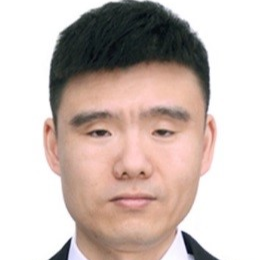
 Jianpu Wang简 历:Jianpu Wang, professor of Nanjing Tech University. His research interests are organic/perovskite semiconductor devices and device physics, aiming for display and energy applications. Prior to NanjingTech, he was a postdoctoral research associate studying organic magnetic field effect in Cavendish Laboratory, University of Cambridge in 2009-2013. And he did his Ph.D study also in Cavendish from 2006 to 2009, when he investigated organic semiconductor/inorganic nanocrystal devices. Prof. Wang worked as a research engineer in Samsung Electronics in South Korea in 2003-2006, for developing OLED displays by using ink-jet printing technology.
Jianpu Wang简 历:Jianpu Wang, professor of Nanjing Tech University. His research interests are organic/perovskite semiconductor devices and device physics, aiming for display and energy applications. Prior to NanjingTech, he was a postdoctoral research associate studying organic magnetic field effect in Cavendish Laboratory, University of Cambridge in 2009-2013. And he did his Ph.D study also in Cavendish from 2006 to 2009, when he investigated organic semiconductor/inorganic nanocrystal devices. Prof. Wang worked as a research engineer in Samsung Electronics in South Korea in 2003-2006, for developing OLED displays by using ink-jet printing technology.
题 目:Perovskite LEDs: High Efficiency and High Brightness
摘 要:Solution-processed light-emitting diodes (LEDs) are attractive for applications in low-cost, large-area lighting sources and displays. Organometal halide perovskites can be processed from solutions at low temperatures to form crystalline direct-bandgap semiconductors with intriguing optoelectronic properties, such as high photoluminescence yield, good charge mobility and excellent color purity. In this talk, I will present our effort to boost the efficiency of perovskite LEDs to a high level which is comparable to organic LEDs. More importantly, organic LEDs are difficult to maintain high efficiency at high current densities due to their excitonic nature and low charge mobilities. Low temperature solution-processed perovskite LEDs demonstrate remarkably high efficiency at high current densities, suggesting unique potential to achieve large size planar LEDs with high efficiency at high brightness.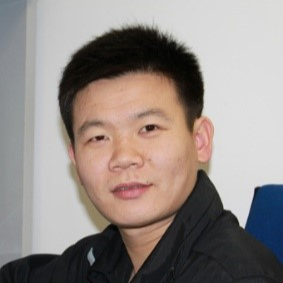
 游经碧简 历:游经碧, 中国科学院半导体研究所研究员, 2015年入选第十一批中组部“青年千人计划”人才项目。2010年在中国科学院半导体研究所获博士学位,2010-2015年在加州大学洛杉矶分校(UCLA)材料科学与工程系从事博士后研究工作,随后进入中国科学院半导体研究所工作,主要从事新型半导体光电器件研究。累计发表论文80余篇,被他引17000余次。
游经碧简 历:游经碧, 中国科学院半导体研究所研究员, 2015年入选第十一批中组部“青年千人计划”人才项目。2010年在中国科学院半导体研究所获博士学位,2010-2015年在加州大学洛杉矶分校(UCLA)材料科学与工程系从事博士后研究工作,随后进入中国科学院半导体研究所工作,主要从事新型半导体光电器件研究。累计发表论文80余篇,被他引17000余次。
题 目:钙钛矿半导体光电器件
摘 要:金属卤化物钙钛矿材料作为一类新型半导体光电材料,既具有吸收系数高、载流子扩散长度长,又具有发光效率高等特点,在太阳能电池、发光二极管等方面都具有很好的发展前景。近年来,钙钛矿光电转换器件研究取得了巨大的进展,其太阳能光电转换效率已达到24.2%,可与传统的硅电池媲美;发光二极管外量子效率已超过20%, 并保持迅猛发展态势。本报告将总结目前国内外钙钛矿光电器件研究的进展和急需解决的问题。同时简要介绍我们在钙钛矿电池和发光二极管方面所开展的一系列工作,包括如何通过钙钛矿薄膜可控生长、界面修饰等方法提高钙钛矿光电器件的转换效率和稳定性。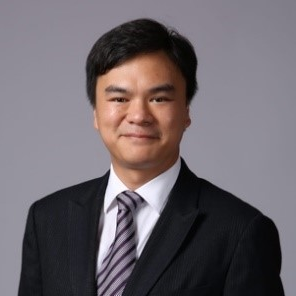
 叶轩立简 历:叶轩立,华南理工大学教授。分别于2001年和2003年在香港中文大学材料系获得学士和硕士学位,2008年于美国华盛顿大学材料科学与工程系获得博士学位。2013年加入华南理工大学发光材料与器件国家重点实验室。目前的研究方向主要集中于协同利用材料、界面和器件工艺等策略提高聚合物及钙钛矿光电器件的性能。已在Nature, Science, Nature Photonics, Nature Commun., Adv. Mater., Joule, JACS, Energy & Environ. Sci. 等期刊发表论文160余篇,论文被引用16000余次,H-指数为69,并连续于2014至2018年度入选汤森路透全球材料学科“高被引科学家”。
叶轩立简 历:叶轩立,华南理工大学教授。分别于2001年和2003年在香港中文大学材料系获得学士和硕士学位,2008年于美国华盛顿大学材料科学与工程系获得博士学位。2013年加入华南理工大学发光材料与器件国家重点实验室。目前的研究方向主要集中于协同利用材料、界面和器件工艺等策略提高聚合物及钙钛矿光电器件的性能。已在Nature, Science, Nature Photonics, Nature Commun., Adv. Mater., Joule, JACS, Energy & Environ. Sci. 等期刊发表论文160余篇,论文被引用16000余次,H-指数为69,并连续于2014至2018年度入选汤森路透全球材料学科“高被引科学家”。
题 目:有机太阳电池的挑战与应用前景
摘 要:有机薄膜太阳电池具有质量轻、可挠曲、无毒性、颜色与透明度可调,可大面积印刷制备及在全方位入射角且弱光环境下仍保持高效率等特性,在一些新兴的光伏应用如建筑光伏窗户、农业光伏大棚及穿戴用柔性太阳电池上较主流的硅晶太阳电池更具优势。经过了20多年的发展,目前有机太阳电池效率已经取得了突破性进展,而如何提高其稳定性、实现实验室小面积器件到工业大面积模组的过渡以及将光伏器件扩大至商业化应用成为下一步需要解决的重要问题。预计在未来5~10年,有望发展出高效、稳定、大面积、低成本的有机太阳电池组件及多样化融合发展的应用。本报告将集中探讨以下几个对提高有机太阳电池性能以及促进其商业化发展的重要问题:1)如何利用界面工程提高有机太阳能电池性能﹣发展具备良好的电荷选择性、与吸光层材料能级匹配及导电性高的新型界面材料,以提高电荷收集效率,开路电压以及减少界面电阻损失;2)利用光学调控优化电池的光捕获性能﹣通过开发高通量的光学模型计算,精确预测电池中的光传播特性及电荷产生速率,从而构建最优化的叠层电池结构以及半透明电池结构,获得最佳的器件性能, 并探索柔性半透明电池于建筑光伏一体化,汽车光伏窗户等方面的应用;3)有机太阳电池的稳定性研究﹣开展持续光照老化研究,研究新型高效吸光材料、界面材料以及加工条件对有机电子器件烧损损耗的影响和机理,掌握提高有机太阳电池稳定性和寿命的方法。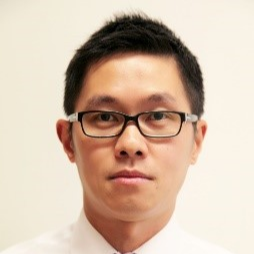
 袁明鉴简 历:袁明鉴,南开大学化学院研究员,中组部“青年千人计划”;天津市“青年千人计划”;南开大学百名青年学科带头人。2009年在中科院化学所李玉良院士指导下获博士学位。2009-2016 年分别在美国华盛顿大学材料科学学院、多伦多大学电气工程学院做博士后研究。在半导体光电子器件,有机/无机异质结构以及碳基和富碳基半导体材料等领域有着深入、系统的研究背景,取得了一系列具有国际影响的原创性研究成果。以第一作者在Nat. Nanotechnol., Nat. Energy, Nat. Commun., Joule., J. Am. Chem. Soc., Adv. Mater.等期刊上发表论文20篇,并在Science, Nature Commun.等期刊上合作发表论文30篇。
袁明鉴简 历:袁明鉴,南开大学化学院研究员,中组部“青年千人计划”;天津市“青年千人计划”;南开大学百名青年学科带头人。2009年在中科院化学所李玉良院士指导下获博士学位。2009-2016 年分别在美国华盛顿大学材料科学学院、多伦多大学电气工程学院做博士后研究。在半导体光电子器件,有机/无机异质结构以及碳基和富碳基半导体材料等领域有着深入、系统的研究背景,取得了一系列具有国际影响的原创性研究成果。以第一作者在Nat. Nanotechnol., Nat. Energy, Nat. Commun., Joule., J. Am. Chem. Soc., Adv. Mater.等期刊上发表论文20篇,并在Science, Nature Commun.等期刊上合作发表论文30篇。
题 目:高效准二维钙钛矿太阳能电池
摘 要:准二维钙钛矿材料与传统三维钙钛矿材料相比具有较好的稳定性。然而,由于其特殊的电子结构及载流子传输各向异性的特点,准二维钙钛矿材料的光电转换效率相对偏低,尤其体现在高的电压损失上。在研究中,我们发现准二维钙钛矿结构首先可以用来稳定一些常温常压下难以稳定的亚稳态钙钛矿相,实现较高的器件光电转换效率。进一步,我们利用界面诱导的方法,通过同步辐射辅助表征,实现了准二维钙钛矿材料的垂直分布。垂直于基底分布的准二维钙钛矿材料,展现出了较随机分布准二维钙钛矿材料更为优异的载流子输运特性。在此方法基础上,我们获得了较高效率的准二维钙钛矿太阳能电池器件。然而,此器件仍然展现了较高的电压损失。进一步,我们通过材料结构设计并结合器件工艺优化,获得了极窄值分布的准二维钙钛矿材料。通过光物理动力学研究,我们发现此类窄 值分布的准二维钙钛矿材料,显著抑制了体系内部的能量转移过程,从而实现了降低了载流子在不同n值组份间的复合,实现了较高的载流子收集效率,进而获得了低电压损失的高效准二维钙钛矿太阳能电池。 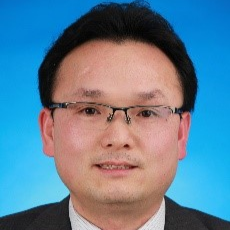
 肖胜雄简 历:肖胜雄,上海师范大学教授。2007年博士毕业于美国哥伦比亚大学,随后加入The Scripps Research Institute从事博士后研究。获上海市特聘教授(东方学者)、上海市优秀学术带头人、上海市曙光计划等荣誉和人才称号。主要研究领域是新型有机半导体材料的设计与合成、以及不同尺寸的有机电子器件的制备和性能研究等,在Nature, JCAS, Angew等期刊发表论文40多篇,引用2100多次。参与撰写Elsevier专著1部,授权发明专利6项。主持国家自然基金、上海市科委、上海市教委等科研项目多项。兼任资源化学国际合作联合实验室技术转移中心副主任。
肖胜雄简 历:肖胜雄,上海师范大学教授。2007年博士毕业于美国哥伦比亚大学,随后加入The Scripps Research Institute从事博士后研究。获上海市特聘教授(东方学者)、上海市优秀学术带头人、上海市曙光计划等荣誉和人才称号。主要研究领域是新型有机半导体材料的设计与合成、以及不同尺寸的有机电子器件的制备和性能研究等,在Nature, JCAS, Angew等期刊发表论文40多篇,引用2100多次。参与撰写Elsevier专著1部,授权发明专利6项。主持国家自然基金、上海市科委、上海市教委等科研项目多项。兼任资源化学国际合作联合实验室技术转移中心副主任。
题 目:Contorted Aromatics as Electronic Materials
摘 要:Here we describe a body of research in the design, synthesis, and assembly of molecular materials made from strained polycyclic aromatic molecules. The strain in the molecular subunits severely distorts the aromatic molecules away from planarity. We coined a term, “contorted aromatics” to describe this class of nonplanar molecules. Three broad classes of these contorted, conjugated molecules: discs1, ribbons and hoops are able to function as excellent electronic materials in organic field effect transistor and organic photovoltaic devices.The molecular feature that is incorporated into the design of each of these contorted structures is a [4]-helicene subunit. Steric congestion between the bay positions’ C-H bonds splay this structure, forming a highly non-planar molecule with a splay angle of 19.9°. We synthesized the contorted octabenzocircumbiphenyl (c-OBCB) by the fusion of six [4]-helicene subunits and two [5]-helicene subunits, one-dimensional ribbons that are further functionalized with perylene diimides oligomers (c-PDI), and a new type of conjugated aromatic macrocyclic corrals (c-MC) formed from the linkage of two bithiophenes donor and two diphenyl perylene diimides acceptor subunits into a strained cycle.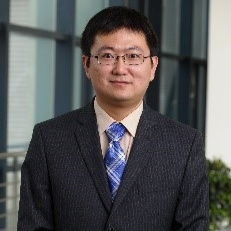
 酒同钢简 历:酒同钢,中科院青岛生物能源与过程研究所研究员,碳基能源转换材料研究组组长。主要从事石墨炔基太阳能电池研究。2001年本科毕业于兰州大学,2006年博士毕业于中科院化学所。2007-2012年先后在法国原子能研究所、荷兰埃因霍温理工大学、加拿大阿尔伯塔大学从事新型太阳能电池研究工作。在在J. Am. Chem. Soc.、Nano. Lett.、Nano Energy和Solar RRL等SCI期刊上发表论文60篇。
酒同钢简 历:酒同钢,中科院青岛生物能源与过程研究所研究员,碳基能源转换材料研究组组长。主要从事石墨炔基太阳能电池研究。2001年本科毕业于兰州大学,2006年博士毕业于中科院化学所。2007-2012年先后在法国原子能研究所、荷兰埃因霍温理工大学、加拿大阿尔伯塔大学从事新型太阳能电池研究工作。在在J. Am. Chem. Soc.、Nano. Lett.、Nano Energy和Solar RRL等SCI期刊上发表论文60篇。
题 目:钙钛矿太阳能电池界面调控研究
摘 要:电池界面性质的优化对钙钛矿太阳能电池的性能和稳定性至关重要。界面电荷转移及相应界面调控可以实现更好的能级匹配、消除迟滞、诱导钙钛矿晶体生长以及提高器件稳定性等。我们首次将石墨炔作为电池活性层的主体材料,其丰富的π电子与钙钛矿前体溶液中的铅有明显的配位作用,改善了薄膜晶体质量,获得21.01%的钙钛矿太阳能电池效率,同时器件稳定性也得到提高。此外我们通过将亚胺键构建的三维 COF 材料掺杂入钙钛矿层中修饰晶界,促进晶体生长,实现了光电转换效率提升,器件电流密度和填充因子提升明显。此外,新型界面修饰材料的开发与应用(石墨炔、官能化石墨炔、离子盐、离子液、氧化锡、氧化钒、铜锌硫等)对器件界面层的改良调控具有明显效果,有效提高了电池器件性能。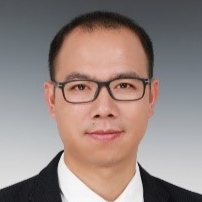
 徐加良简 历:徐加良,南开大学材料科学与工程学院特聘研究员,博士生导师。2010年博士毕业于中国科学院化学研究所,师从李玉良院士。后赴荷兰奈梅亨大学从事Marie-Curie博士后研究工作,2013年获得荷兰科学研究基金VENI项目,从事独立课题研究。2014年加入天津大学化工学院,2018年调职南开大学材料科学与工程学院。研究方向为光学功能分子材料及器件。
徐加良简 历:徐加良,南开大学材料科学与工程学院特聘研究员,博士生导师。2010年博士毕业于中国科学院化学研究所,师从李玉良院士。后赴荷兰奈梅亨大学从事Marie-Curie博士后研究工作,2013年获得荷兰科学研究基金VENI项目,从事独立课题研究。2014年加入天津大学化工学院,2018年调职南开大学材料科学与工程学院。研究方向为光学功能分子材料及器件。
题 目:非线性光学分子材料
摘 要:用光子代替电子作为信息载体,被认为是解决基于微电子技术的当代信息技术所遇到的量子尺寸效应及热效应等瓶颈,满足当代社会对信息爆炸般增长的需求的最有效途径。光子技术的发展很大程度上取决于具有优异光学性能的材料的发展,尤其是波长及亚波长尺度的低维微纳米光功能材料的发展对光子器件的微型化和集成化至关重要。能够改变光的频率等基本性质的非线性光学材料被认为是构筑全光开关器件,开发光学计算机的最关键材料。我们利用共价及非共价作用的协同效应,构筑了一系列具有高响应的非线性光学低维微米及纳米晶态材料。不仅具有很高的二阶或三阶非线性光学响应系数,且具有优异的光学稳定性,在光学集成器件有着广泛的应用前景。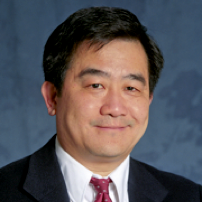
 Alex Jen简 历:Alex Jen is currently serving as the Provost of the City University of Hong Kong. Before his current post, he was the Boeing-Johnson Chair Professor and Chair of the Department of Materials Science & Engineering at the University of Washington. He was also the Chief Scientist for the Clean Energy Institute endowed by the Washington State Governor. His research interest is focused on utilizing molecular, polymeric and biomacromolecular self-assembly to create ordered arrangement of organic and inorganic functional materials for photonics, opto-electronics, nanomedicine, and nanotechnology. He has co-authored > 860 papers, given over 550 invited lectures. His work is well cited with > 49,500 citations and a h-index of 113. He is also a co-inventor of more than 60 patents and invention disclosures. For his pioneering contributions in organic photonics and electronics, he was elected as a Foreign Member of the European Academy of Sciences and as Fellows of the AAAS, MRS, ACS, PMSE, OSA, and SPIE professional societies. He has also been appointed as the Changjiang Endowed Chair and 1000 Talent Professor (Zhejiang Univ.), as the World Class University Professor by the Korea Univ., and as the Distinguished Chair Professor by the National Taiwan University.
Alex Jen简 历:Alex Jen is currently serving as the Provost of the City University of Hong Kong. Before his current post, he was the Boeing-Johnson Chair Professor and Chair of the Department of Materials Science & Engineering at the University of Washington. He was also the Chief Scientist for the Clean Energy Institute endowed by the Washington State Governor. His research interest is focused on utilizing molecular, polymeric and biomacromolecular self-assembly to create ordered arrangement of organic and inorganic functional materials for photonics, opto-electronics, nanomedicine, and nanotechnology. He has co-authored > 860 papers, given over 550 invited lectures. His work is well cited with > 49,500 citations and a h-index of 113. He is also a co-inventor of more than 60 patents and invention disclosures. For his pioneering contributions in organic photonics and electronics, he was elected as a Foreign Member of the European Academy of Sciences and as Fellows of the AAAS, MRS, ACS, PMSE, OSA, and SPIE professional societies. He has also been appointed as the Changjiang Endowed Chair and 1000 Talent Professor (Zhejiang Univ.), as the World Class University Professor by the Korea Univ., and as the Distinguished Chair Professor by the National Taiwan University.
题 目:Rational Design and Interface Engineering for High-Performance Perovskite and OPV/Perovskite Hybrid Solar Cells
摘 要:Advances in controlled synthesis, processing, and tuning of the properties of NIR non-fullerene acceptors and perovskites have enabled significantly enhanced performance of organic and perovskite hybrid solar cells. The performance of hybrid perovskite solar cells is strongly dependent on their efficiency in harvesting light, charge transport, and charge collection at the organic bulk-heterojunction and perovskite interfaces. In this talk, an integrated approach of combining material design, interface, and device engineering to significantly improve the performance and long-term stability of OPV/perovskite hybrid photovoltaic cells (PCE of ~22%) will be discussed. In addition, the incorporation of metal-organic-frameworks (MOF) as charge-transporting interlayers have also shown both high efficiency, better stability and the capability to capture any potentially leaked lead ions which can ensure environmental sustainability. At the end, several new device architectures and optical engineering strategies to make tandem cells and semitransparent solar cells will be discussed to explore the full promise of these solar cells.